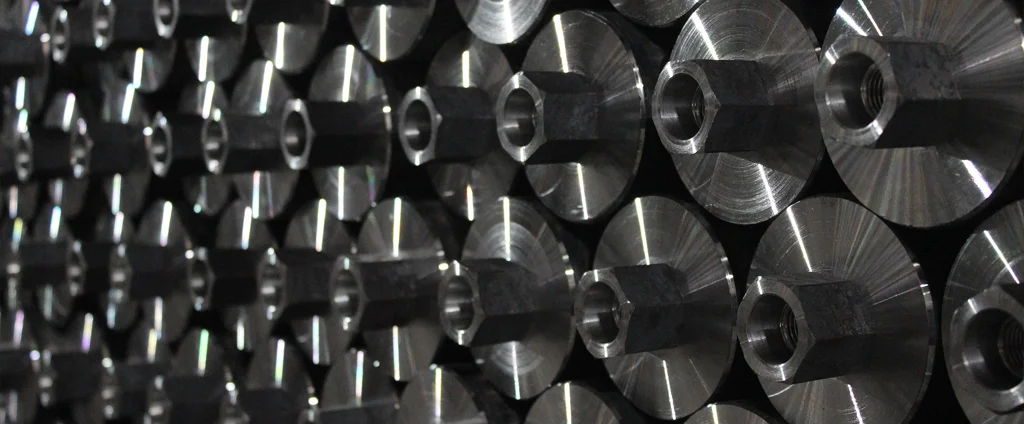SAE/AISI 1016 Carbon Steel (UNS G10160)

SAE/AISI 1016 is a versatile low-carbon steel offering excellent machinability, weldability, and formability. While its strength and hardness are lower than high-carbon steels, it is ideal for cost-effective applications requiring moderate mechanical properties and ease of fabrication.
| Chemical Composition | ||
|---|---|---|
| Element | Min | Max |
| Iron | 98.13% | 99.58% |
| Carbon | 0.12% | 0.18% |
| Manganese | 0.60% | 0.90% |
| Phosphorous | —— | 0.04% |
| Sulfur | —— | 0.05% |
The following table provides a list of SAE/AISI 1016 properties in both SI and US customary/Imperial units.
Click on the button to switch between Metric and Imperial units.
| Physical Properties | Metric |
|---|---|
| Density | 7870 kg/m3 |
| Mechanical Properties | Metric |
| Tensile Strength (Ultimate) | 380 - 480 MPa |
| Tensile Strength (Yield) | 200 - 390 MPa |
| Young’s Modulus (E) | 190 - 210 GPa |
| Bulk Modulus (K) | 140 GPa |
| Shear Modulus (G) | 80 GPa |
| Elongation at Break | 18 - 28% |
| Poisson’s Ratio (ν) | 0.27 - 0.30 |
| Brinell Hardness | 110 - 140 |
| Thermal Properties | Metric |
| Thermal Conductivity | 52 W/m·K |
| Specific Heat Capacity (Cp) | 481 J/kg·K |
| Coefficient of Thermal Expansion (αL) | 1.15×10-5 1/°C |
| Electrical Properties | Metric |
| Electrical Conductivity | 4.6×106 S/m |
| Electrical Resistivity | 2.17×10-7 Ω·m |
The values in this table are approximate and can vary depending on various factors such as the specific manufacturing process and heat treatment applied to the alloy.
Advantages & Disadvantages of 1016 Carbon Steel
| Advantages | Disadvantages |
|---|---|
| Cost-effective | Limited strength |
| Good weldability | Limited hardness |
| Good formability | Susceptibility to corrosion |
| Good machinability | Lower wear resistance |
Applications of 1016 Carbon Steel
AISI 1016 carbon steel is widely used in structural, automotive, and fabrication industries due to its affordability, weldability, and ease of machining. Key applications include:
- Structural Components: Widely used in structural applications, such as building construction, bridges, and infrastructure projects. Its good formability and weldability make it suitable for creating structural components like beams, columns, and frameworks.
- General Fabrication: Due to its cost-effectiveness and ease of machining, it is commonly used in general fabrication processes. It can be easily formed, cut, and welded, making it suitable for manufacturing a wide range of components, including brackets, frames, supports, and miscellaneous metal parts.
- Automotive Parts: Utilized in the automotive industry for the production of various components. Commonly found in chassis and frame components, brackets, mounting plates, and other structural parts where strength and formability are required.
- Machinery and Equipment: Employed in the manufacturing of machinery and equipment, including machine parts, gears, shafts, and mounting plates. Its machinability and formability make it an ideal choice for producing these components.
- Fasteners: Often used to manufacture bolts, nuts, screws, and washers. These fasteners are widely used in construction, machinery, and other industries.
- Agricultural Equipment: Suitable for various agricultural equipment applications, including components for tractors, plows, cultivators, and other farming machinery. Its strength and formability make it a reliable choice.
- Hand Tools: Used in the production of wrenches, hammers, chisels, and screwdrivers. Its ease of machining and cost-effectiveness make it suitable for manufacturing these tools.
- Fencing and Wire Products: Sometimes used in fencing materials and wire products due to its strength and durability.
